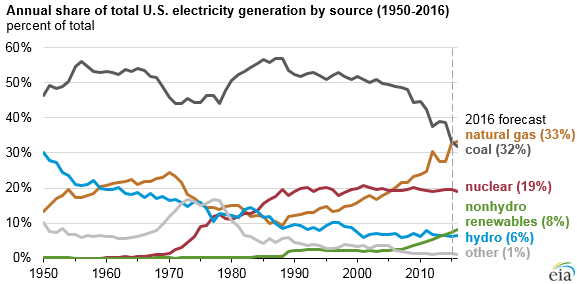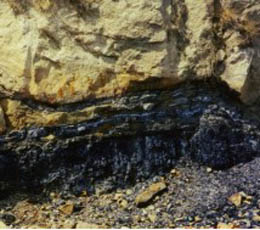FRANKFORT--Coal is still the primary fuel source for electricity generation in Kentucky, but the demand for coal-fired power is waning.
That was the word from Kentucky Public Service Commissioner Talina Mathews, who told the Interim Joint Committee on Natural Resources and Energy today that coal generated 83 percent of Kentucky's electricity in 2016, but preliminary data shows that percentage declined below 80 percent in 2017.
"I think that's interesting - and the gap is mostly made up from natural gas," said Mathews.
She directed lawmakers to charts illustrating changes in electricity consumption, especially in the industrial sector where Mathews said demand for electricity fell from over 50 percent in recent years to 37 percent in 2016. She attributed most of that drop to the closure of the Paducah gaseous diffusion plant, a federal facility that produced enriched uranium until 2013.
But electricity consumption in Kentucky has been decreasing for much longer than 2013, Mathews said, with consumption steadily decreasing since 2008. "We're using less - there's less electricity generated for all sectors in Kentucky," she said.
Also affecting coal-fired electricity generation in Kentucky are the retirements, or closure, of 12 coal plants between 2013 and 2017. Two other PSC-regulated coal-fired plants operated by LG&E and KU are planned for retirement next year, said Mathews.
The reasons for the closures are many, she said: low natural gas prices, the advanced age of the plants (each with an average age of 54 years), efficiency, federal regulatory rules governing mercury and air toxics standards, or MATS, and declining demand, among other factors.
As far decreased consumption, Committee Co-Chair Rep. Jim Gooch, R-Providence, wondered if conservation could also be at play. Mathews said yes, to some degree.
"I think some of it is. I think you buy a (new) refrigerator, it's going to use less electricity ... with the standards on appliances. I think it's mostly industrial load, though," said Mathews. "(And) yes, if you looked at the average household use of electricity, you're going to see it's declining."
While most of the plants being retired are coal-fired, not all are. LG&E and KU retired their Haefling #3 plant in 2013 after 43 years in operation - although retirement of natural gas plants is not the norm in Kentucky, per Mathews' testimony. And that's not just a question of fuel price according to testimony from Mathews, who said the price of coal is steady.
"I think the cost of extraction has led prices to go up, but it's not significant," she said. Natural gas prices, while "volatile" before 2008, have remained low for years, she said, and are expected to stay low for at least another 10 years.
The cost of electricity has gone up, however, said Mathews, for a variety of reasons including environmental costs, declining load and cost related to early closure of power plants.
Below: The national usage of coal continues to decline.

|








